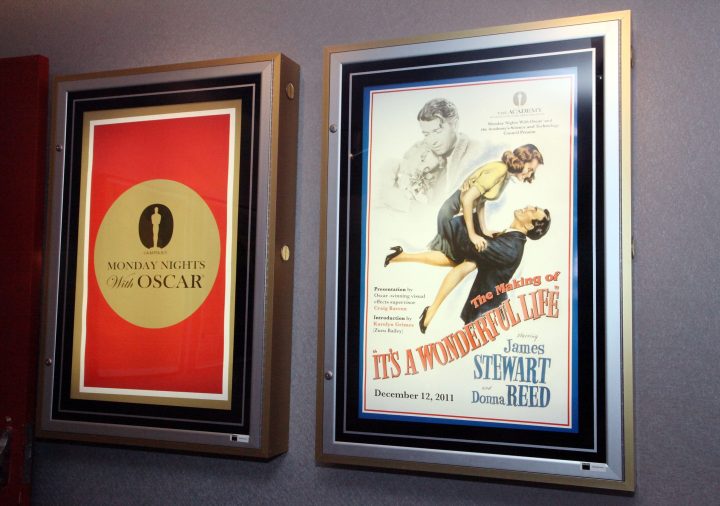
The economic lessons we can learn from “It’s a Wonderful Life”
The economic lessons we can learn from “It’s a Wonderful Life”

It’s the holiday season, and with that in mind we decided to alter our Econ Extra Credit segment this month. We normally watch a documentary a month with Marketplace themes, but feature films have Marketplace themes too … especially this one.
For December, we’re watching a familiar classic – “It’s a Wonderful Life.”
It is full of teachable economic moments, but let’s focus on the family business featured in the film: Bailey Bros. Building & Loan Association.
Unsure of what a building and loan association is? The film’s main character, George Bailey (played by James Stewart) offers this explanation – “You’re thinking of this place all wrong, as if I had the money back in a safe,” he said in the film. “The money’s not here. Well, your money’s in Joe’s house. That’s right next to yours. And then the Kennedy house and Mrs. Macklin’s house and a hundred others. You’re lending them the money to build and then they’re going to pay it back to you as best they can.”
For more on what exactly these institutions provided and what happened to them, Marketplace’s David Brancaccio spoke with David Mason, a history professor at Georgia Gwinnett College. The following is an edited transcript of their conversation.
David Brancaccio: So do you like the character’s explanation there? Does it help you understand what a real building and loan was?
David Mason: Absolutely. It was basically an association that was member-owned … the individuals joined with a primary goal of becoming homeowners. And they did by making monthly payments toward shares in the association. And those payments would then be lent back to them as a form of a home mortgage. And over the course of say, seven to 12 years, they would end up owning their own home.
Brancaccio: So it was an institution that had an important role in what sounds like economic development of a very local area.
Mason: Absolutely. These were neighborhood associations in the 1920s, there were over 12,000 building loans across the country. And so people would form them to be part of their local community. And homeownership was part of that status of, quote, “becoming a true American.”
Brancaccio: And in the film, the arch villain, the greedy villain, [Mr. Potter], runs many things in that town. He has his fingers in a lot of pies. But he also has a more conventional bank … you could see how a building and loan might be seen as competitive to a commercial bank.
Mason: It was. There was kind of a strange relationship between banks and building and loans. Building and loans needed the banks as a form of liquidity for meeting daily needs. But they were very separate in terms of what they lent to. Banks could not or often would not lend to homeowners, because these were long-term commitments, and banks tended to make short-term loans. Building and loans, on the other hand, they were all about providing mortgages. So there was a friendly rivalry but, you know, in the movie, Mr. Potter wanted it all.
Brancaccio: In fact, here you have again, George Bailey, making the pitch for his kind of banking here.
George Bailey: Here Ed, you know. You remember last year when things weren’t going so well, you couldn’t make your payments. Well, you didn’t lose your house, did you? You think Potter would’ve let you keep it?
Mason: Absolutely. Yeah, no, the building and loan was a very affordable way for people of modest means to buy a home. They were literally the first amortizing mortgages. Things that we’re all familiar with today, building loans invented.
Building and loan associations enter a period of change
Brancaccio: What happened to building and loan associations? They didn’t really make it out of the Great Depression, did they?
Mason: Well, the term “building and loan” did not survive the Great Depression, the term savings and loan, took over. Building and loans basically transitioned into what we call savings and loans today. It was part of a process that the industry went through, after the Great Depression to kind of reorganize and unify itself and become, in some ways, more professional. Because in the movie, the Bailey Brothers Building & Loan really looks like a family business. And that is part of the appeal. But in the post war-era, the industry leaders wanted the savings and loans to be a little bit more professional, more like banks.
Brancaccio: Yeah, especially since that’s when deposit insurance, the FDIC (the Federal Deposit Insurance Corporation) comes in. And if the government’s going to backstop some of this money that people have in institutions like this, it’s going to want a certain level of rigor.
Mason: Yes, the savings and loan industry – or the building and loan industry – lobbied for and got deposit insurance just for savings and loans in 1935. They also got a federal charter for the federal savings and loan. So this is all part of that process of … revamping and modernizing the building and loan image.
Brancaccio: Yeah, of course, savings and loans run into trouble. That defines the latter half of the 1980s. This gargantuan government unwinding of parts of that system?
Mason: Absolutely. The problem with the savings and loans was deregulation. They basically let the institutions make loans on almost anything they wanted. And that led to all forms of corruption, fraud, but also just plain old bad lending decisions.
Brancaccio: And if somehow you’re nostalgic for what you’re seeing, George Bailey’s institution provided in the movie. I suppose… What do we have? We have savings and loans. We have nonprofit credit unions these days. We have sometimes for-profit community development financial institutions that focus on lending locally.
Mason: Yes and we still actually do have building loans. If you go to Ohio, you’ll find building loans, they still exist.
Brancaccio: Where people can pool their money and it’s still focused, would you say, on mortgages?
Mason: Yes, absolutely. These guys, they never lost sight of that. And I think one of the great advantages of the building and loan and you see it in the movie, and with savings and loans today, is their community focused. They position themselves as community lenders.
Brancaccio: Professor Mason, why are you even tracking this? What caught your attention and all this?
Mason: I was a banker at one point and I remember I was in grad school at the University of Texas and I was up in Dallas … I saw the fruits of a savings and loan disaster, Empire Savings and Loan, which made a whole bunch of condo loans outside of Dallas and it really piqued my interest. And from there, I worked for a brief period at the Resolution Trust Corporation. And my dissertation on the history of savings and loans was just kind of this fascinating exploration into the building and loan phenomenon.
There’s a lot happening in the world. Through it all, Marketplace is here for you.
You rely on Marketplace to break down the world’s events and tell you how it affects you in a fact-based, approachable way. We rely on your financial support to keep making that possible.
Your donation today powers the independent journalism that you rely on. For just $5/month, you can help sustain Marketplace so we can keep reporting on the things that matter to you.


















